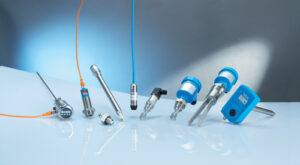Important considerations
From monitoring levels in storage and buffer tanks to ensuring beverage bottles don’t overflow, level measurement is an important application in a variety of industries. However, due to the wide range of solutions available, selecting the appropriate sensor for level measurement tasks can be challenging.
The most important consideration is the type of liquid or solid being measured. Physical properties and color variations must be taken into account when determining which solution to choose. Other properties that may affect the measurement are foam, highly viscous fluids or fluids that coat.
Questions that should be asked prior to choosing a level measurement sensor include the following:
- What kind of control capabilities do the sensors have?
- Is there any operator training required?
- Will the material being measured affect the sensor’s performance over time, requiring maintenance for cleaning and/or replacement? If so, how often should preventative work be scheduled and what are the downtime implications?
- What is the expected life of a particular sensor?
- If the process involves multiple types of materials with varying characteristics, will changeovers be an issue?
Technologies
Once you’ve analyzed your particular application situation and the type of material that will be measured, the next step is to evaluate the different level measurement sensing options. The 8 most common level sensing technologies include:
- Laser
- TDR (Time Domain Reflectometry) / Guided Wave Radar / Microwave
- Ultrasonic
- Tuning Fork
- Optical prism
- Pressure
- Capacitance
- Floats
Depending on the type of application — switching/detection or continuous monitoring — you can begin to narrow down your options. Tuning forks, optical prisms, and some capacitance sensors, for example, are restricted to switching applications. Other technologies work for both switching and measurement — laser, guided wave radar, ultrasonic, pressure, and float.
As a leader in level measurement devices, SICK has provided the guide below to help you determine which sensors would be most suitable for your application.
 For a detailed description of the types of level measurement technologies, download the following white paper: 8 Most Common Level Sensing Methods.
For a detailed description of the types of level measurement technologies, download the following white paper: 8 Most Common Level Sensing Methods.
Your Turn…
What is your biggest concern when choosing a level measurement sensor? Tell us in the comments below.





